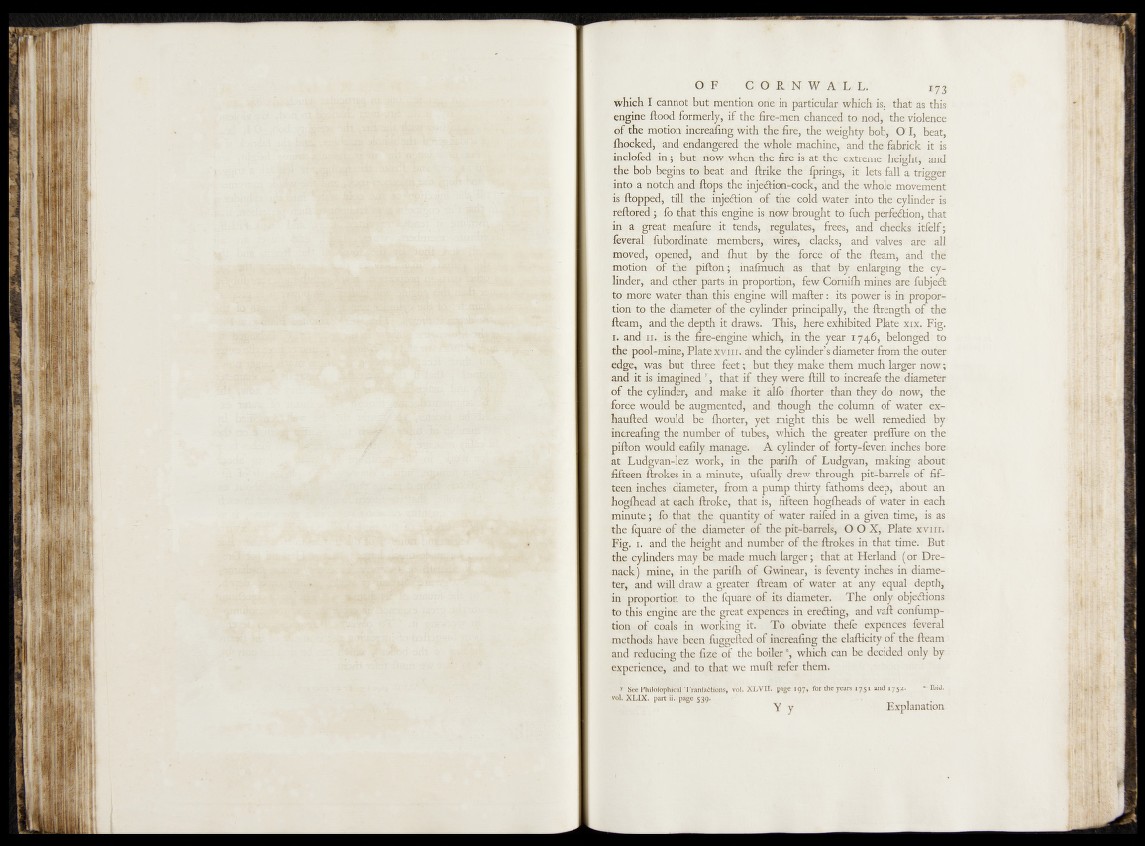
which I cannot but mention one in particular which is, that as this
engine flood, formerly,; if the fire-men chanced to nod, the violence
of the motion increafing with the fire, the weighty bob, O’I, beat,
fhocked, and endangered the whole machine, and the fabriek it is
inclofed :in; but , lïów.when- the fire is at the extreme height, and
the bob begins tp- beat and ftrike : the fprings,- it lets fall a trigger
into a-notch and flops the injedfion-cock, and the whole movement
is flopped, tilflthe; injection o f the cold water into the cylinder is
reftored ; fo that this; engine is now brought to- fuch perfection, that
in a great meafure it. tends, .regulates, frees, and checks; itfelf;
lèverai fub.or«3inate members,^ wires, . clacks, and valves ; are all
moved, opened, and ; fhut | b y - the yforcê ). of the fleam, and the
motion of the ipiflón; inafinuch? : as that ; by- enlarging the cylinder,
and other.partsgin proportion, few Cotnim mines are fubjeCfc
to more water than this engine will matter : its power is in proportion
to the diameter of the cylinder principally, the ftrength of the
Ream, and the depth it draws. This, here exhibited Plate xix. Fig.
ip and 11. .is the fire-engine which, in the, year-1746, belonged to
the pool-mine, Plate xviu. and thé cylinder’s diameter from the outer
edge, was .but three 'feet;, but they make them much larger now;
and it is imagined7, that i f they were ftill to .increalb the diameter
of the'cylinder, and make it allb Ihorter than they do now, the
.force would be augmented, and though the column of water ex-
haufted would be Ihorter, yet might this be well remedied by
increafing the number of tubes, which the greater preflure on the
pifton would eafily manage. A cylinder of forty-feven inches bore
at Ludgvan-lez work, in the parilh of Ludgvan, making about
fifteen , flr-okes in a minute, ulually drew through pit-barrels of fifteen
inphes. diameter, from a pump thirty fathoms deep, about an
hoglhead at each ftroke, that is, fifteen hogfheads of water in each
minute ; - fo that thé quantity of water railed in a given time, is as
the fquaré of the diameter of the pit-barrels, O O X, Plate xvnr.
Fig. i| and the height and number of the firokes in that time. But
the cylinders may bé made much larger; that at Herland (or Dre-
nack) mine, in the parilh of Gwinear, is feventy inches in diameter,
and will draw a greater ftream of water at any equal depth,
in proportion to the lquare of its diameter. The only objections
to this engine are the great expences in erecting, and vaft confump-
tipn of coals in working it. T o obviate thefe expences feveral
methods have been fuggefted of increafing the elafticity of the fleam
and reducing the fize of the boiler *, which can be decided only by
experience, and to that we muft refer them.
r See Philofophical Tranfa&ions, vol. XLVII. page 197, for the years 1751 and 175a. *• Ihid.
vol. XLIX. part ii. page 539. t . ,
Y y Explanation